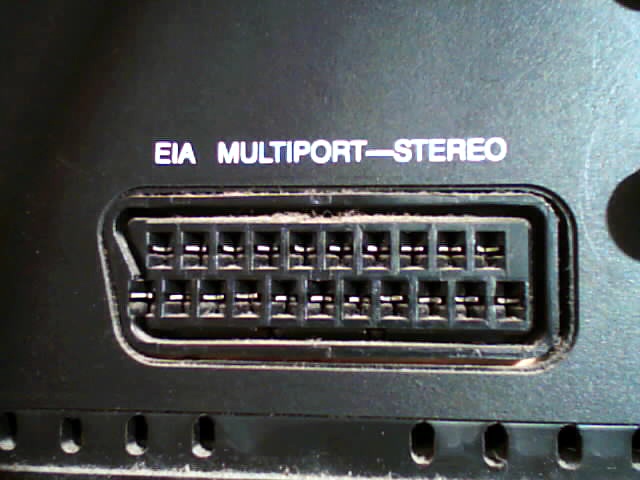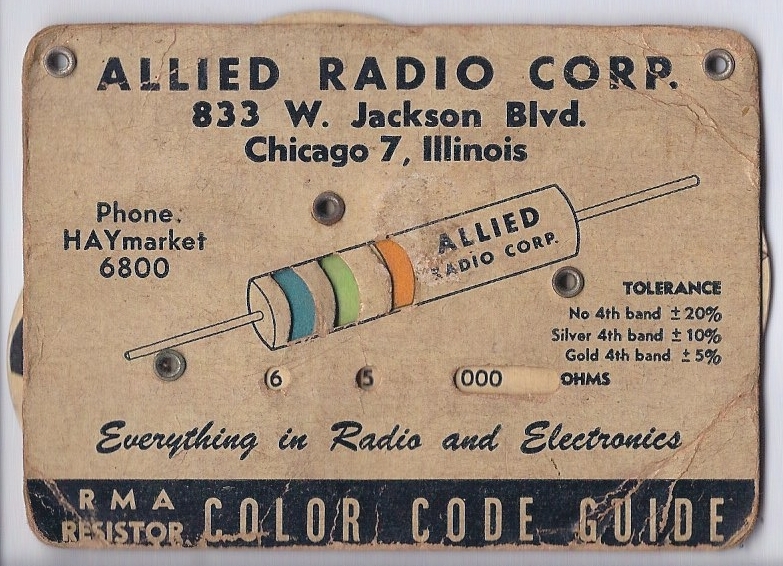Radio Manufacturers Association on:
[Wikipedia]
[Google]
[Amazon]
 The Electronic Industries Alliance (EIA; until 1997 Electronic Industries Association) was an American standards and
The Electronic Industries Alliance (EIA; until 1997 Electronic Industries Association) was an American standards and
 In 1924, 50 radio manufacturers in
In 1924, 50 radio manufacturers in
The JEDEC history page, including EIA history
{{Authority control 1924 establishments in Illinois 2011 disestablishments in the United States Organizations established in 1924 Organizations disestablished in 2011 2011 mergers and acquisitions Companies based in San Francisco Electrical safety standards organizations Standards organizations in the United States Technology trade associations
 The Electronic Industries Alliance (EIA; until 1997 Electronic Industries Association) was an American standards and
The Electronic Industries Alliance (EIA; until 1997 Electronic Industries Association) was an American standards and trade organization
A trade association, also known as an industry trade group, business association, sector association or industry body, is an organization founded and funded by businesses that operate in a specific industry. An industry trade association partic ...
composed as an alliance of trade associations for electronics manufacturers in the United States. They developed standards to ensure the equipment of different manufacturers was compatible and interchangeable. The EIA ceased operations on February 11, 2011, but the former sectors continue to serve the constituencies of EIA.
History
 In 1924, 50 radio manufacturers in
In 1924, 50 radio manufacturers in Chicago
(''City in a Garden''); I Will
, image_map =
, map_caption = Interactive Map of Chicago
, coordinates =
, coordinates_footnotes =
, subdivision_type = Country
, subdivision_name ...
formed a trade group called the ''Associated Radio Manufacturers''. This organization was designed to control the licensing of the large number of radio patents so that each member could have access to all the relevant patents necessary to build radio transmitters, antennas and receivers. Over time, new electronic technologies brought new members, non-manufacturer members, and name changes.
Names in chronological order:
* 1924 – ''Associated Radio Manufacturers''
* 1924 – ''Radio Manufacturers Association'' (''RMA'')
* 1950 – ''Radio Television Manufacturers Association'' (''RTMA'')
* 1953 – ''Radio Electronics Television Manufacturers Association'' (''RETMA'')
* 1957 – ''Electronic Industries Association'' (''EIA'')
* 1997 – ''Electronic Industries Alliance'' (''EIA'')
The organization's headquarters were in Arlington, Virginia
Arlington County is a county in the Commonwealth of Virginia. The county is situated in Northern Virginia on the southwestern bank of the Potomac River directly across from the District of Columbia, of which it was once a part. The county ...
. The EIA divided its activities into the following sectors:
* ECA – Electronic Components, Assemblies, Equipment & Supplies Association
* JEDEC
The JEDEC Solid State Technology Association is an independent semiconductor engineering trade organization and standardization body headquartered in Arlington County, Virginia, United States.
JEDEC has over 300 members, including some of the w ...
– JEDEC Solid State Technology Association
The JEDEC Solid State Technology Association is an independent semiconductor engineering trade organization and standardization body headquartered in Arlington County, Virginia, United States.
JEDEC has over 300 members, including some of the w ...
, former Joint Electron Device Engineering Council
* GEIA – (now part of TechAmerica), Government Electronics and Information Technology Association
* TIA – Telecommunications Industry Association
The Telecommunications Industry Association (TIA) is accredited by the American National Standards Institute (ANSI) to develop voluntary, consensus-based industry standards for a wide variety of Information and Communication Technologies ( ICT) ...
* CEA – Consumer Electronics Association
The Consumer Technology Association (CTA) is a standard and trade organization representing 1,376 consumer technology companies in the United States. CTA works to influence public policy, holds events such as the Consumer Electronics Show (CE ...
The EIA announced in 2007 that it would be dissolved into its constituent divisions, and transferred operations soon after. The Alliance formally ceased to exist on February 11, 2011. EIA designated ECA to continue to develop standards for interconnect, passive and electro-mechanical (IP&E) electronic components under the ANSI-designation of EIA standards. All other electronic components standards will be managed by their respective sectors.
The ECA merged with the National Electronic Distributors Association (NEDA) in 2011 to form the Electronic Components Industry Association (ECIA). However, the EIA standards brand will continue for IP&E standards within ECIA.
EIA standards
With the changing names of the EIA, the naming convention of the standards was also adapted. For example, a standard defining serial communication between computers and modems e.g. was originally drafted as a Recommended Standard, thus the "RS"RS-232
In telecommunications, RS-232 or Recommended Standard 232 is a standard originally introduced in 1960 for serial communication transmission of data. It formally defines signals connecting between a ''DTE'' (''data terminal equipment'') such ...
. Later it was taken over by the EIA as ''EIA-232''. Later this standard was managed by the TIA and the name was changed to the current ''TIA-232''. Because the EIA was accredited by ANSI to help develop standards in its areas, these standards are often described as (e.g. ''ANSI TIA-232'', or formerly as ''ANSI EIA/TIA-232''). As currently authorized, any ANSI standard designated at ANSI EIA-xxx is developed or managed by ECA (and, in the future, ECIA).
See also
* Electronic color code – RMA Resistor Color Code *E series of preferred numbers
The E series is a system of preferred numbers (also called preferred values) derived for use in electronic components. It consists of the E3, E6, E12, E24, E48, E96 and E192 series, where the number after the 'E' designates the quantity of ...
– RMA Preferred Number Values of Fixed Composition Resistors
References
External links
The JEDEC history page, including EIA history
{{Authority control 1924 establishments in Illinois 2011 disestablishments in the United States Organizations established in 1924 Organizations disestablished in 2011 2011 mergers and acquisitions Companies based in San Francisco Electrical safety standards organizations Standards organizations in the United States Technology trade associations